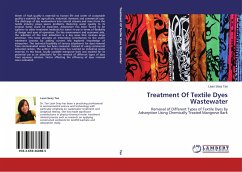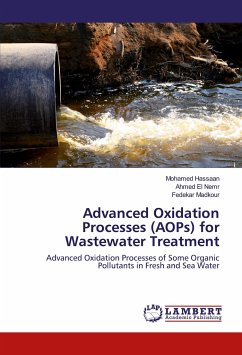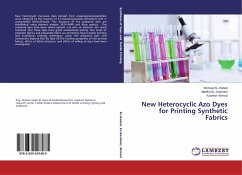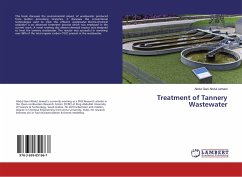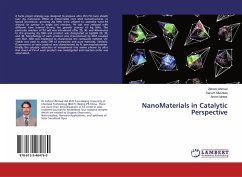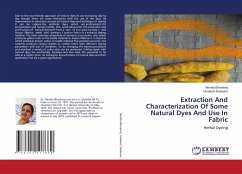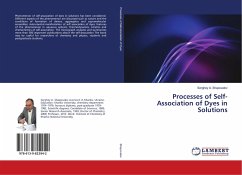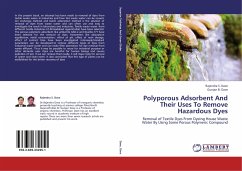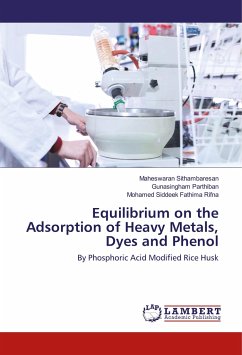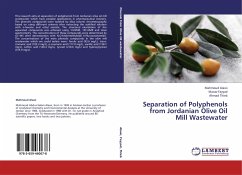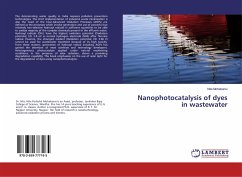
Nanophotocatalysis of dyes in wastewater
Versandkostenfrei!
Versandfertig in 6-10 Tagen
27,99 €
inkl. MwSt.

PAYBACK Punkte
14 °P sammeln!
The deteriorating water quality in India requires pollution prevention technologies .The strict implementation of industrial waste minimization is also the need of the hour.Advanced Oxidation Processes (AOPs) are defined as the processes which involve generation and use of powerful but relatively non-selective hydroxyl radicals in sufficient quantities to be able to oxidize majority of the complex chemicals present in the effluent water. Hydroxyl radicals (OH.) have the highest oxidation potential (Oxidation potential, E0: 2.8 eV vs normal hydrogen electrode (NHE) after fluorine radical. Fluor...
The deteriorating water quality in India requires pollution prevention technologies .The strict implementation of industrial waste minimization is also the need of the hour.Advanced Oxidation Processes (AOPs) are defined as the processes which involve generation and use of powerful but relatively non-selective hydroxyl radicals in sufficient quantities to be able to oxidize majority of the complex chemicals present in the effluent water. Hydroxyl radicals (OH.) have the highest oxidation potential (Oxidation potential, E0: 2.8 eV vs normal hydrogen electrode (NHE) after fluorine radical. Fluorine, the strongest oxidant (Oxidation potential, E0: 3.06 V) cannot be used for wastewater treatment because of its high toxicity. From these reasons, generation of hydroxyl radical including AOPs has gained the attention of most scientists and technology developers. Heterogeneous photocatalysis applied under natural weathering conditions, in the presence of solar radiation, shows a promising degradation capability. This book emphasizes on the use of solar light for the degradation of dyes using nanophotocatalysts .



